Healing Benefits of Gardens
The relationship between plants and gardens and our health is ancient. As early as 3000 B.C. the Chinese have used medicinal herbs. The Greeks built a temple for Asclepius, their god of healing, set among mineral springs, bathing pools, and gardens. Green was a sacred color in ancient Egypt and represented the hope of spring that brought new vegetation and life.
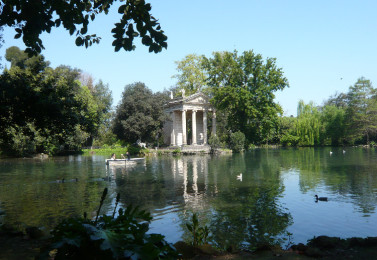
This appreciation for the power of plants and gardens to our health has thankfully carried on to present times. Healing gardens can now be found in community parks, arboretums, botanical gardens and a variety of institutions including substance abuse treatment centers, outpatient clinics, long-term care facilities, hospices, retirement homes and hospitals around the world. And most importantly, they can be found/built even in your own backyard.
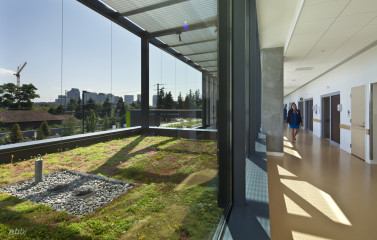
In light of all the recent Coronavirus (COVID-19) news, it’s so important to remember all the ways that your garden can help keep you healthy (even when there’s not a virus going around). Here are some quick facts about the benefits of gardens and gardening:
- Reduces stress and anxiety and promotes a sense of wellbeing
- The good bacteria in soil (Mycobacterium vaccae) has been shown to lessen symptoms of allergies, asthma, and psoriasis along with depression
- Some plants can be used for medicinal purposes and have their own set of benefits
- You can burn 200-400 calories doing an hour of gardening work
- Helps improve muscle strength, increases flexibility, and helps prevent osteoporosis
- Early exposure to dirt has been shown to help reduce allergies and autoimmune diseases in children
Now that we know a couple of the benefits of gardens and gardening, what things can be implemented in our own gardens to create a space for healing and wellbeing? If you keep the 5 main senses in mind, this will help steer you in the right direction as sensory interaction with nature is key.
Sight
Grow plants that you find pleasing. If you like a monochromatic color scheme, stick with that. If you love all sorts of bright colors, go wild. Grow what you love! Try mixing finely textured plants like Maidenhair Fern (Adiantum venustum) with more bold textures like Hostas to create a visually interesting garden. If you mostly stay inside and enjoy your garden from a table or a comfy chair, think of those views when you look out so that you can enjoy your garden from both the outside and inside. You can also add focal points to the garden such as a sculpture or interesting rock formations to draw the eye around the space.
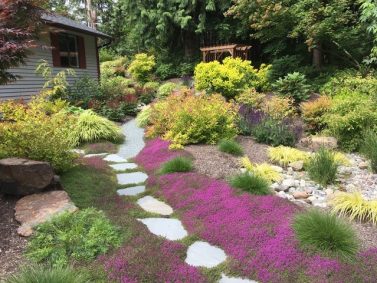
Taste
Not only can you grow fruits, veggies, and herbs in your gardens that will keep you healthy, but there are quite a few plants that you might not realize have medicinal benefits. Plants such as Echinacea, Hibiscus, and even Dandelions have different health benefits. You can read more about these and other medicinal plants here.
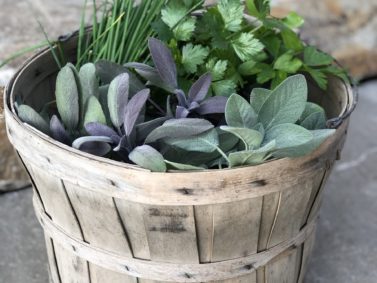
Smell
There’s nothing quite like taking a walk outside and smelling the fresh air and the flowers in bloom. Think about planting your favorite scented plants near doorways and entrances to the garden (such as Daphne or Sarcococca). Plants like Lavender and Sage are great options for aromatherapy in the garden.
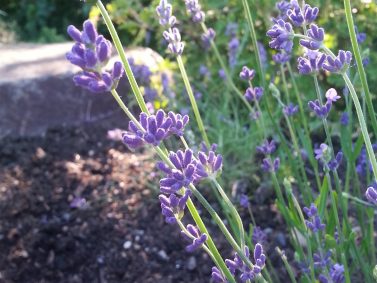
Touch
Digging around in the dirt and feeling the soil beneath your hands has its own benefits but if you’re not much for getting your hands dirty, certain plants can stimulate our sense of touch. For smooth/soft textures, Lamb’s Ear is great. For more coarse textures, the big leaves of Gunnera are fun to touch and look at.
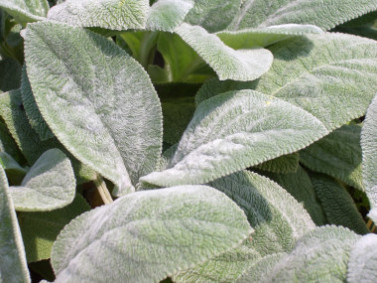
Sound
While a lot of the garden is focused on sight and taste, sound can be incorporated in a number of ways. A water fountain, big or small, can provide the relaxing sound of bubbling water. By choosing plants that supply food for birds and other wildlife, you can invite those pleasant sounds into the garden. For ideas about attracting birds to your garden, you can read more here, here, and here.
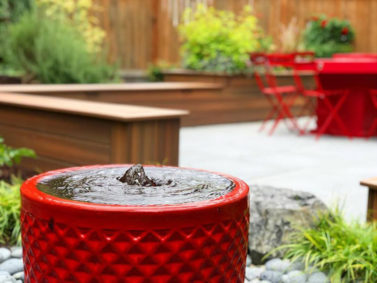
If you don’t have a space to call your own garden, don’t forget that you can make your own in containers! Container gardens work well for small spaces like apartment balconies, side yards, patio areas, etc. You can grow most things you would grow in a normal garden so if you want edibles or just a nice assortment of plants to look at, don’t get discouraged if you don’t have a big area.
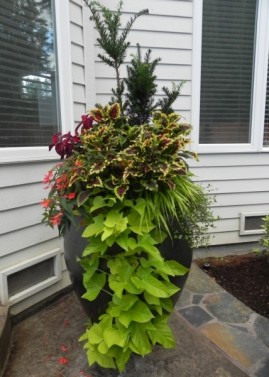
Although things can seem a bit scary and overwhelming right now, getting out in your garden is a great option so you don’t feel cooped up in your house. If the whole family is home from work and/or school, it’s a fun activity for everyone to take part in while still practicing social distancing.
Organized under Community, Edible Gardening, Education, Garden Tips & Advice, Sustainability, Trends. Labeled as garden benefits, gardening benefits, healing benefits of gardens, Healing Gardens, medicinal plants, power of plants.
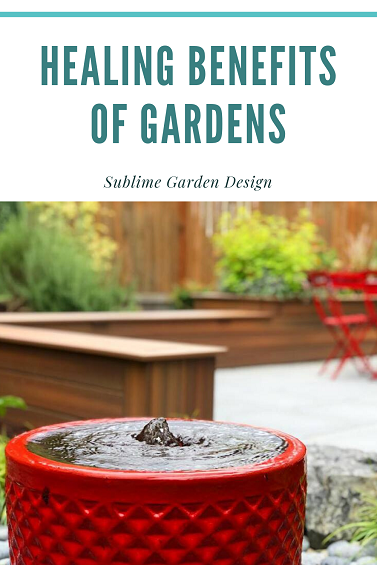


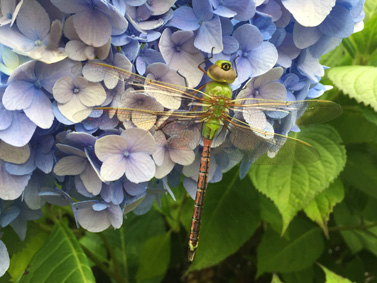
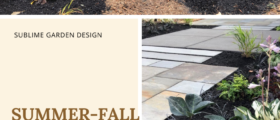
1 comment... (add a comment)